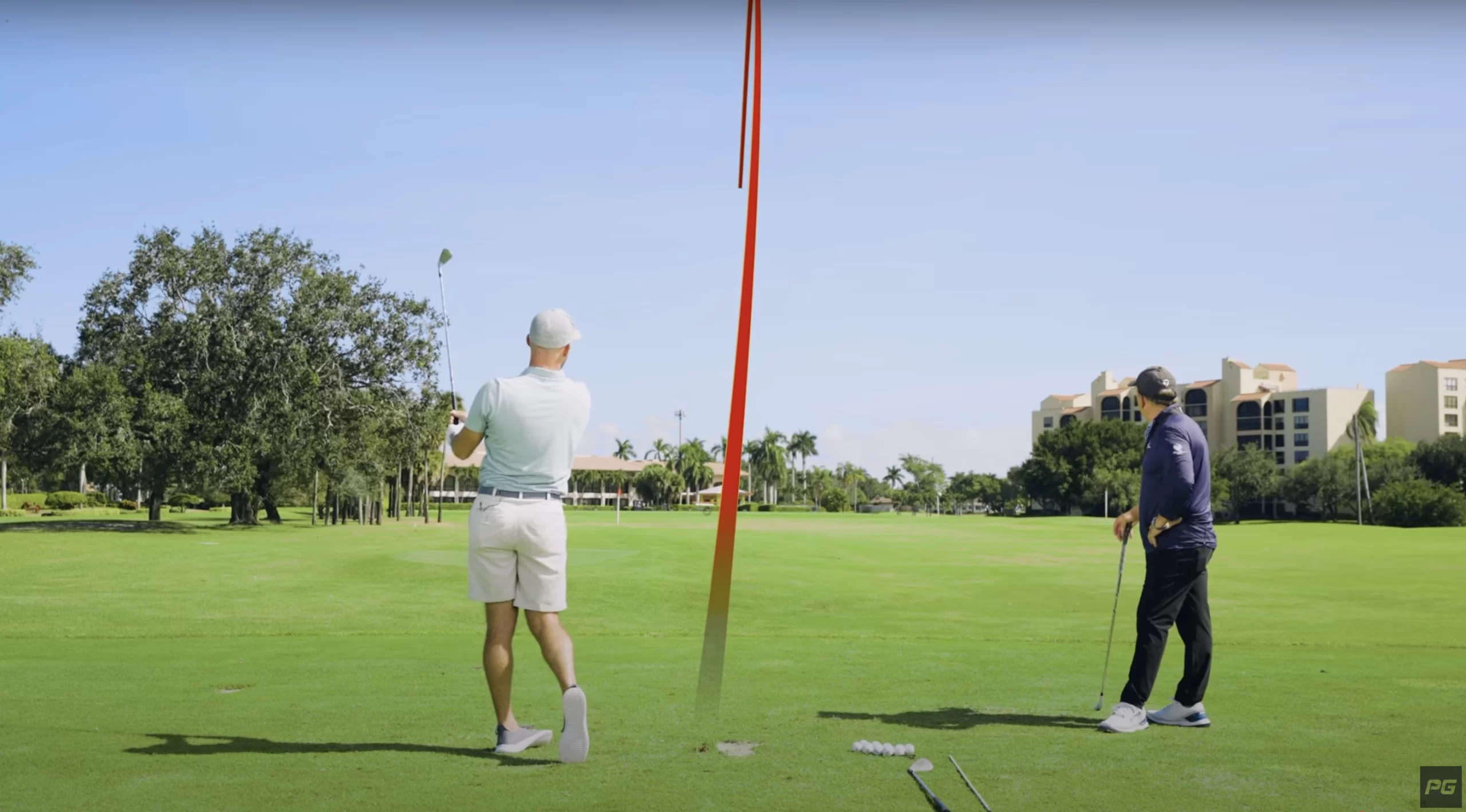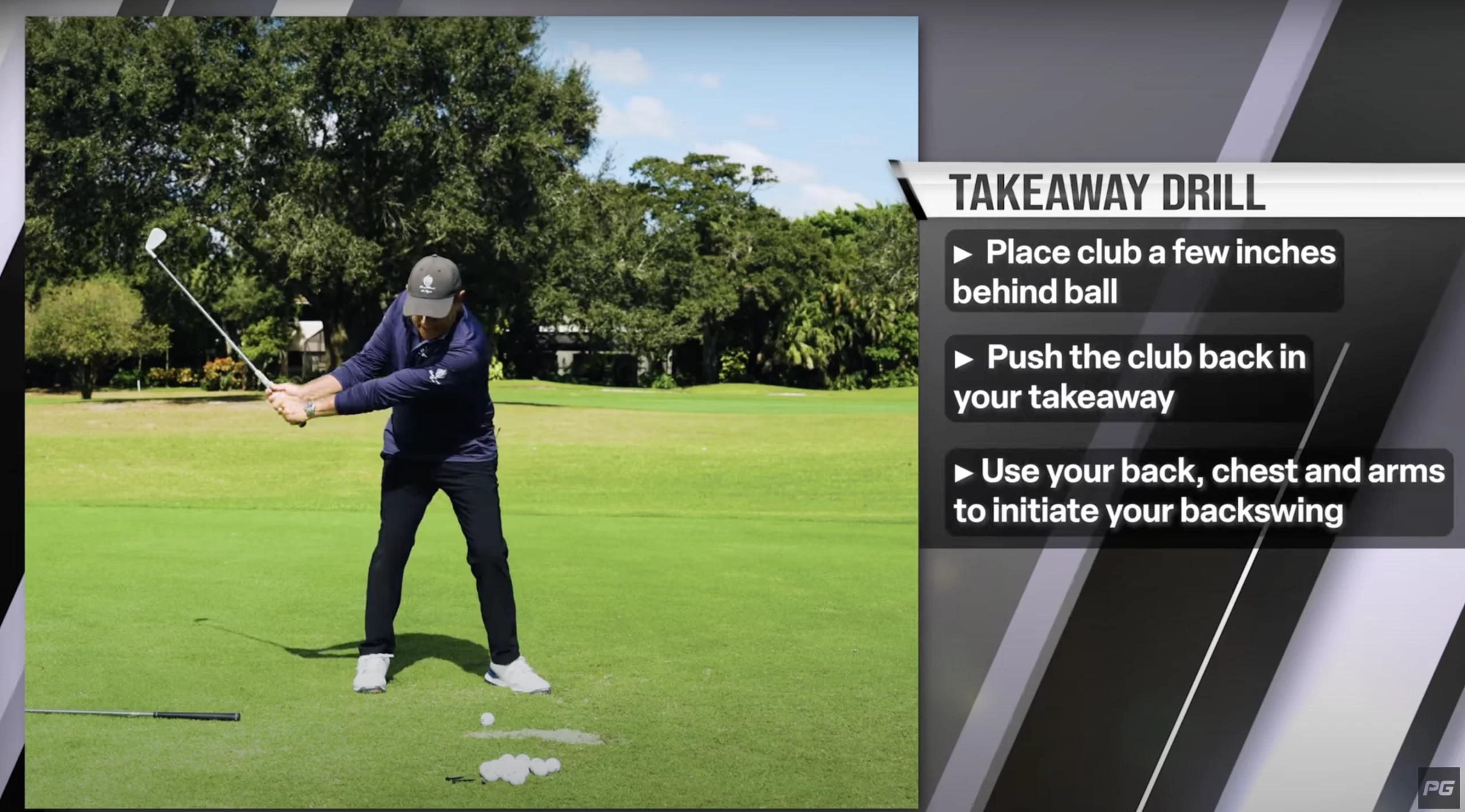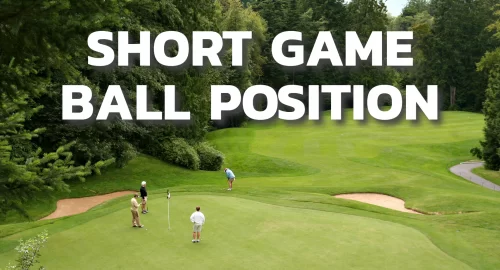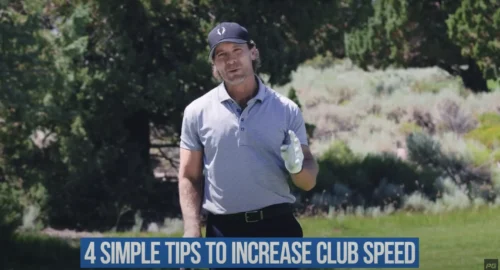
Fix This Golf Swing Mistake in the Takeaway
How you start your swing can make all the difference in your overall golf game. There’s one common mistake many golfers make in the takeaway that costs them more than 20 shots per round. In this post, we’ll break down this key takeaway error and offer a drill that can help correct it, setting you up for a smoother and more effective swing.
Watch the YouTube video below with top Performance Golf Coaches Eric Cogorno and Rick Smith, then you can read the detailed breakdown below!
The Big Takeaway Mistake
Let’s first define the common takeaway mistake many beginners make, which is incorrectly initiating their swing by relying on their hands and arms alone. This can cause a range of problems, such as failing to turn the body properly or struggling to maintain proper swing path.
Essentially, the takeaway becomes disconnected from the rest of the swing, forcing you to make compensations later on.
When you initiate your takeaway with only your arms, you lack the necessary body rotation to create width and power in the swing. Your chest, back, and core should engage early in the process to activate the larger muscles that drive the motion. Without this activation, your swing may become overly reliant on the smaller muscles, leading to a shorter, less controlled backswing and often causing your clubface to open or close at improper times.
These errors can add up over the course of a round and can easily cost you 20 or more strokes.
The Simple Drill to Correct Your Takeaway

-
Step 1: Set Up the Drill
- Place a 2×4 or similar object (such as a wooden block) behind the ball, a few inches away. This visual guide helps align your setup correctly.
- Position the club so that the back of the clubhead rests against the object. This encourages proper muscle activation and alignment.
-
Step 2: Engage Your Larger Muscles
- As you begin the takeaway, focus on pushing the grip of the club back using your chest, back, and arms, not just your hands. This should feel like you’re “loading” your body to prepare for a strong swing.
- Engaging your core and back early ensures you’re using your larger muscles, which provides a solid foundation for the rest of the swing.
-
Step 3: Create Width and Turn
- Pushing the club back with your larger muscles naturally creates width and helps initiate the body turn. Your arms and body should move together, setting you up for a more fluid motion throughout the swing.
- This early activation prevents you from relying solely on your arms, which can lead to improper rotation and inconsistent swings.
-
Step 4: Check Your Position
- Once you’ve moved the club back, stop and check your position. The handle should point somewhere between straight down and dead horizontal. This ensures you’re on plane and not forcing an over-rotation or too flat a backswing.
- Your arms should be extended, and your body should start to rotate with the swing, maintaining proper width without overdoing it.
-
Step 5: Repeat the Motion
- Practice this motion without hitting a ball until it feels natural. Once comfortable, hit a few shots while maintaining the feeling of pushing the club back with your body’s larger muscles.
- The goal is to recreate the “push-back” sensation throughout the swing, making it easier to maintain a smooth, efficient motion.
By incorporating this drill into your practice routine, you’ll be able to correctly start your swing every time. Engaging your body’s larger muscles during the takeaway creates a more powerful, controlled swing and helps you avoid the common mistake of relying on your hands and arms.
Consistent practice of this drill will lead to a more effective and fluid swing, reducing the effort required during the rest of your swing and improving your overall game.

